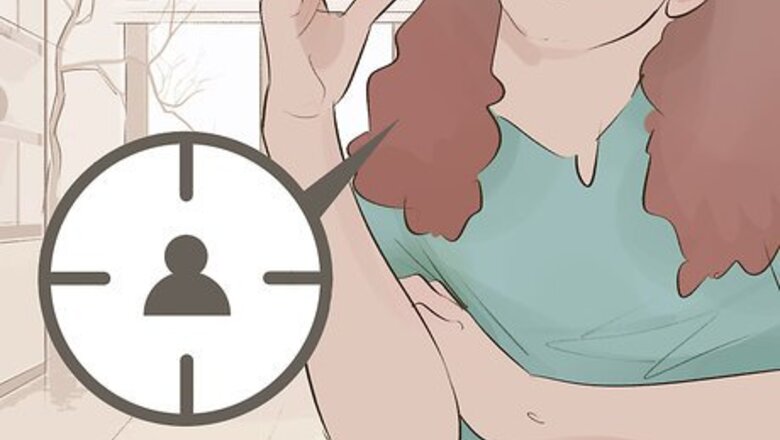
views
Planning the Guide

Think about your target audience. You should consider a specific audience when you begin your how-to guide. The audience will determine the level of detail you need to provide as the breadth of information you should cover. A how-to guide for making a mango mojito directed at bartenders would differ greatly from the same how-to guide written for people without bartending experience who wish to make a mango mojito at home. The layperson’s guide would likely be more detailed without using any beverage service “slang.”

Familiarize yourself with the process you’re writing about. Before you write, you should be able to do the process yourself several times. Even if it is something you have done repeatedly, try doing it again, thinking mindfully about each step you take as you go through the process. If you pour yourself a mango mojito at the end of every day, you likely don’t have to think about the proper ratios, and you may take parts of the process for granted (like getting out a glass and filling it with ice).
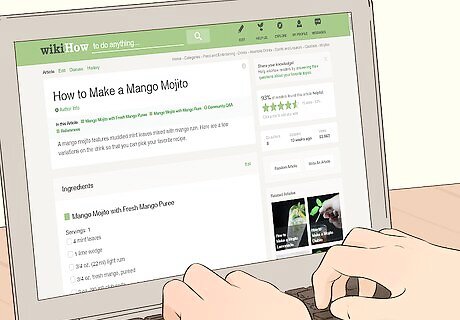
Research the process. Your own experience can be a great basis for a how-to article, but it never hurts to supplement your experience with research. Try searching for the topic online and see how others do what you do. You may want to integrate others’ approaches into your guide by suggesting alternate approaches. Be sure to credit any sources that you draw from directly. If you have a signature mango mojito recipe, your how-to article can only be improved by searching for other recipes for the same drink. You may find a shortcut, an alternate ingredient, or an aesthetically pleasing garnish you never considered.
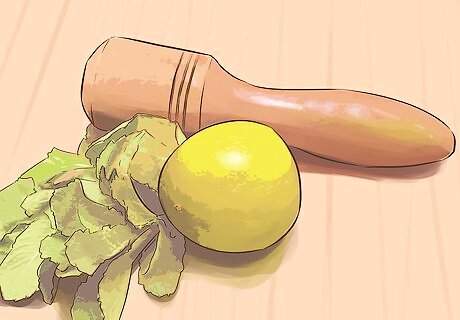
Gather materials needed to create your guide. Before writing, collect the material and information you wish to include in your guide. This may mean photographing the process at each step or creating flowcharts or graphs that complement your written material. For your mango mojito guide, you might want to photograph the ingredients before you begin, then take action shots of each part of the mojito creation process. You may even want to recruit another person to take the pictures.
Writing the Guide
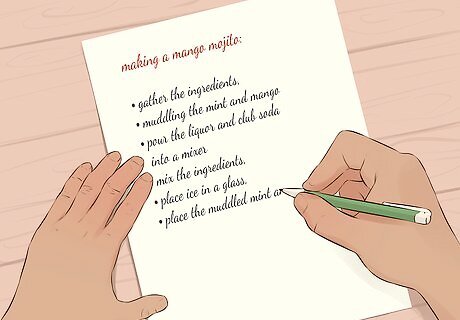
Establish the sequence. The main sequence of events is the most important part of a how-to guide. The order of the steps is very important since the nature of the guide is a step-by-step approach. You should choose one if there is more than one possible order for some of the steps. You could note that some of the steps are interchangeable, but it’s best to commit to a particular order. Your sequence for making a mango mojito could be gathering the ingredients, muddling the mint and mango, pouring the liquor and club soda into a mixer, mixing the ingredients, placing ice in a glass, placing the muddled mint and mango on top of the ice, pouring the liquids over the ice and fruit, then garnishing the drink, and serving the drink. The sequence is important; obviously, you can’t serve the drink before you make it. An example of an optional item placement in the sequence is when to place the ice in the glass: it could be done before you start mixing the drink.

Create clear, active headings. Even if a single step contains detailed information, it should begin with a clear, concise heading. The heading should be directing someone towards an action. Some people may skim your guide, or rely primarily on the headings to guide them, reading the subtext only if they are confused about how to implement a step. For example, a heading for a step in your mojito making may be “Muddle the mint and mango.” Someone who knows how to muddle may read the step heading and do the step without reading the instructions that accompany the step. The heading is clear and precise.
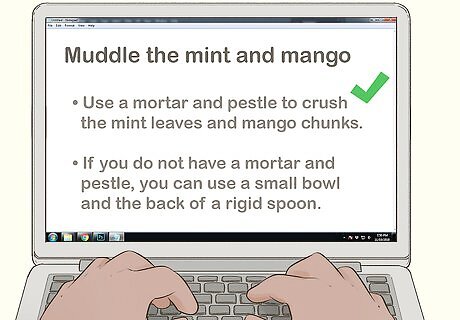
Use explanatory text and bullet points when necessary. Beneath your clear headings, you should provide adequate (but not overwhelming) additional information. If your information for completing a step exceeds 4 or 5 bullet points or sentences, you might want to break the step into two steps. You can always use “part one” and “part two” if a single heading is necessary for both steps. Consider using bullet points to break up information. This is often more accessible than a paragraph of block text. The text beneath the heading “Muddle the mint and mango” may be: Use a mortar and pestle to crush the mint leaves and mango chunks. If you do not have a mortar and pestle, use a small bowl and the back of a wooden spoon.
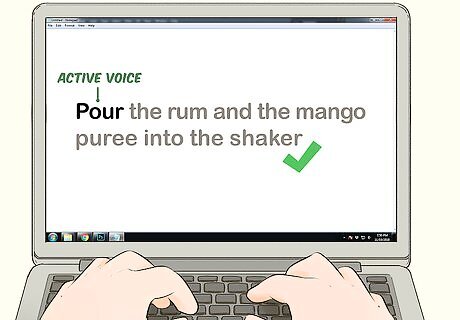
Write in an active, clear style. Particularly if you are writing for laypeople (not experts in the field in which you are writing), you should write clearly and use short, active sentences. Aim for a 7th or 8th-grade reading level.

Use graphics to support your text. A how-to guide almost always benefits from graphics. The level of graphics that you can use may be limited by the publication medium (if you are creating a print publication, for example, you may be limited to black and white line graphics). Graphics should be high-quality and show exactly what happens in each step. Be sure you have permission to use and publish any graphics you did not create yourself. If you are writing a how-to guide for a technical process on a computer, you may want to take screenshots to demonstrate what you are saying. For making a mojito, photographs of the drink evolving with each step would be helpful to most readers.
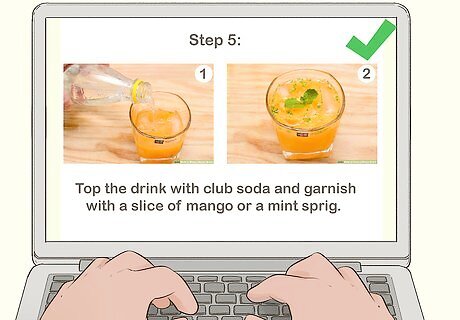
Edit graphics or screenshots to highlight key information. Use a graphic editing program to draw arrows to or circles around portions of your graphic to direct the audience’s attention to what you want to show them. For example, if you have provided a photograph of all of the ingredients of your mojito with the step “Select a quality rum,” you may want to add an arrow on top of the graphic that indicates the bottle of rum in your photo.
Finishing the Guide

Proofread your writing. As with any writing, check carefully for spelling and grammar mistakes. You should also be sure that your writing is clear and simple. Having someone else proofread for you or read your steps in reverse can be helpful. Reading in reverse can make your writing seem new and prevent you from “seeing” what you meant to say instead of what you have said.

Test the guide for accuracy. Before you distribute your how-to guide, follow it yourself. Pretend you are doing something for the first time and follow your step-by-step instructions. You may have omitted an obvious step or written something out of order. If possible, have someone else follow the guide and give you feedback about how easy it is. Make yourself that mango mojito; you deserve it! Be sure you are making it from the steps in the guide, though, and not your memory of how you’ve made it in the past.

Publish the guide. Once you have perfected your guide, publish it in an appropriate venue. This may mean putting it on your blog, submitting it to a website that curates guest posts, or submitting it to a print publication. Whatever the venue, ensure your writing meets any specified guidelines for length, image quality, or other considerations.




















Comments
0 comment